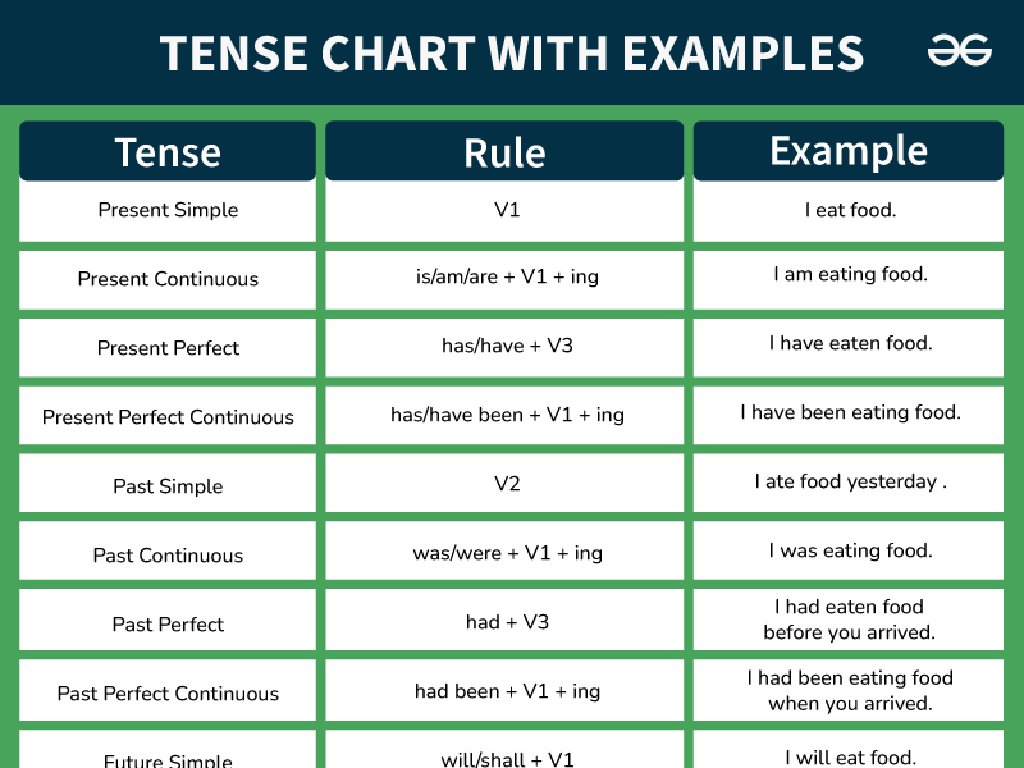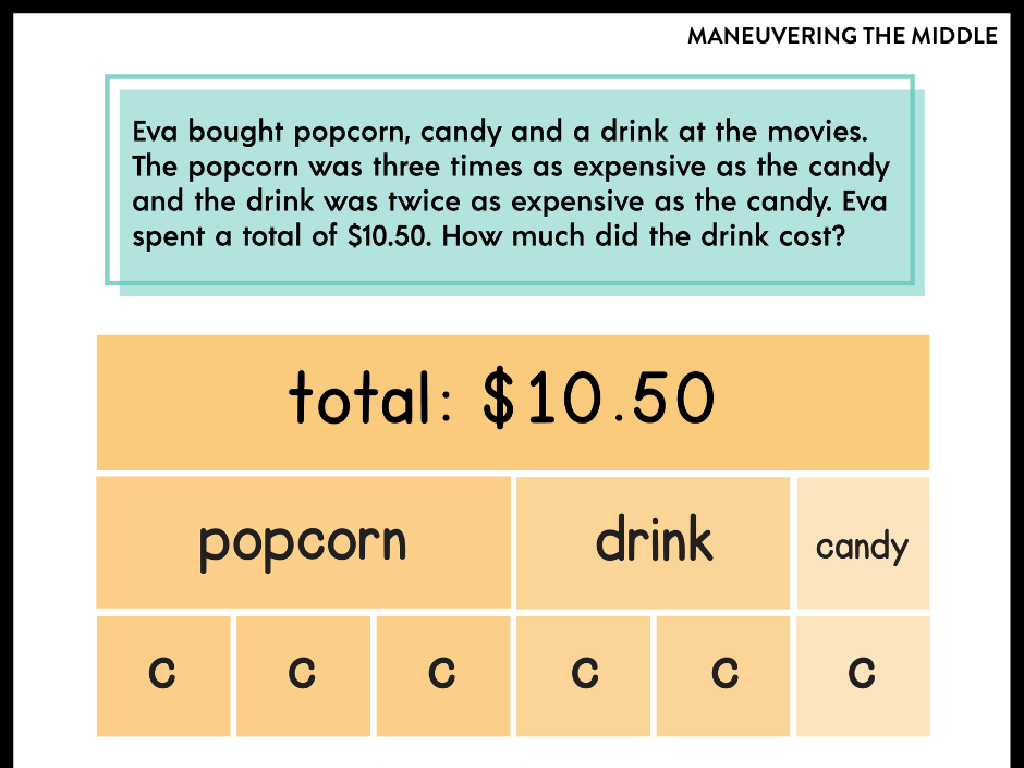Subject-Verb Agreement
Subject: Language arts
Grade: Fifth grade
Topic: Verb Types
Please LOG IN to download the presentation. Access is available to registered users only.
View More Content
Subject-Verb Agreement: The Heart of Sentences
– Explore Subject-Verb Agreement
– Sentences need matching subjects and verbs
– A singular subject matches a singular verb; plural subjects match plural verbs.
– Key to clear communication
– Helps the listener or reader understand who or what is doing the action.
– Essential for writing and speaking
– Incorrect agreement can lead to confusion and misunderstandings.
|
This slide introduces the concept of subject-verb agreement and emphasizes its importance in both written and spoken English. It’s crucial for students to understand that for a sentence to make sense, the subject and verb must agree in number. This means if the subject is singular, the verb must also be singular, and if the subject is plural, the verb must be plural. Highlight the role of subject-verb agreement in making sentences clear and understandable, and how it can affect the quality of communication. Provide examples of correct and incorrect subject-verb agreement to illustrate the point. Encourage students to listen for subject-verb agreement in everyday conversations and to practice it in their writing.
Understanding Verbs: Action and Being
– Verbs are core of sentences
– Verbs show action or state
– Action verbs: run, jump; state verbs: is, are
– Examples: run, jump, is, are
– ‘She runs fast’ shows action. ‘He is happy’ shows state.
– Practice identifying verbs
|
This slide introduces the concept of verbs to the students, emphasizing their importance as the action or state of being in sentences. Start by explaining that verbs are not just actions like ‘run’ or ‘jump’ but also include states of being, such as ‘is’ or ‘are.’ Use clear, simple examples to illustrate the difference between action verbs and state-of-being verbs. Engage the class by asking them to find verbs in sentences you provide. This activity will help reinforce their understanding of verbs and prepare them for more complex aspects of subject-verb agreement.
Understanding Subject-Verb Agreement
– Discovering the sentence subject
– The subject tells us who or what the sentence is about.
– Subjects: Nouns or Pronouns
– Subjects can be a person, place, thing, or idea (noun) or ‘he’, ‘she’, ‘it’, ‘they’ (pronoun).
– Examples of subjects
– ‘The cat (subject) sleeps (verb).’ ‘They (subject) run (verb) in the park.’
– Matching subjects with verbs
– Ensure the verb agrees with the subject in number (singular or plural).
|
This slide introduces the concept of subject-verb agreement, which is crucial for constructing grammatically correct sentences. Begin by explaining that the subject is the main actor or topic of the sentence and can be either a noun or a pronoun. Provide clear examples of subjects in sentences to illustrate the point. Emphasize that the verb must agree with the subject in number; singular subjects take singular verbs, and plural subjects take plural verbs. Use examples that the students can relate to and encourage them to create sentences of their own to practice this concept.
Making Them Agree!: Subject-Verb Agreement
– Subjects & verbs must match
– Singular subjects use singular verbs
– ‘He runs’ not ‘He run’
– Plural subjects use plural verbs
– ‘They run’ not ‘They runs’
– Practice makes perfect
|
This slide introduces the fundamental concept of subject-verb agreement, which is crucial for constructing grammatically correct sentences. Emphasize that verbs must agree in number with their subjects; singular subjects take singular verbs, and plural subjects take plural verbs. Provide clear examples, such as using ‘runs’ with a singular subject like ‘he’, and ‘run’ with a plural subject like ‘they’. Encourage students to practice by writing their own sentences and checking for agreement. Plan an activity where students can correct sentences with subject-verb agreement errors and create a few of their own examples to share with the class.
Singular vs. Plural: Subject-Verb Agreement
– Singular subjects use singular verbs
– Example: ‘The cat runs across the yard.’
– Plural subjects use plural verbs
– Example: ‘The cats run across the yard.’
– Verbs change with the subject number
– ‘Runs’ changes to ‘run’ when ‘cat’ becomes ‘cats’.
– Practice makes perfect
|
This slide introduces the concept of subject-verb agreement, focusing on the difference between singular and plural subjects. Emphasize that the form of the verb must match the number of the subject: singular subjects take singular verbs, and plural subjects take plural verbs. Use the examples provided to illustrate how the verb ‘runs’ changes to ‘run’ when the subject changes from singular ‘cat’ to plural ‘cats’. Encourage students to practice by creating their own sentences and identifying the correct verb forms. This foundational grammar skill will improve their writing and speaking clarity.
Let’s Practice Together: Subject-Verb Agreement
– Identify subject and verb
– Find the ‘who’ or ‘what’ and the action word in a sentence
– Determine if subject is singular or plural
– Is the ‘who’ or ‘what’ one thing (singular) or more (plural)?
– Ensure verb agrees with subject
– Match the verb form to the subject’s number (singular or plural)
|
This slide is for a class activity focused on practicing subject-verb agreement. Start by explaining how to identify the subject (the ‘who’ or ‘what’ of the sentence) and the verb (the action word or state of being). Then, guide students to determine whether the subject is singular or plural. Finally, ensure they understand that the verb must agree in number with the subject (singular subjects take singular verbs, plural subjects take plural verbs). For the activity, provide sentences where students will identify the subject and verb, decide the number of the subject, and correct the verb if it doesn’t agree with the subject. Possible activities: 1) Sentence correction exercises, 2) Writing sentences with given subjects and verbs, 3) Peer review of sentence constructions, 4) Verb agreement quiz game, 5) Group discussion on tricky sentences.
Tricky Cases in Subject-Verb Agreement
– Collective nouns can be tricky
– Treat collective nouns like ‘team’ as single units unless members act individually.
– ‘And’ vs. ‘or’ in subjects
– With ‘and’, use a plural verb. With ‘or’, the verb agrees with the noun closer to it.
– Watch out for phrases between
– Ignore extra phrases when matching subjects and verbs to avoid errors.
– Practice makes perfect
|
This slide addresses some of the more complex aspects of subject-verb agreement that can confuse students. Collective nouns, such as ‘team’ or ‘group’, typically take a singular verb, but they can take a plural verb if the emphasis is on the individuals within the group. When subjects are joined by ‘and’, a plural verb is used, but when joined by ‘or’, the verb should agree with the closest subject. Phrases that come between subjects and verbs should not affect the agreement; the verb should always agree with the main subject. Provide examples and exercises for each case to reinforce these rules. For instance, ‘The team is winning’ versus ‘The team are wearing their new uniforms.’
Group Activity: Verb Hunt!
– Find verbs in worksheet sentences
– Correct the verbs for subject-verb agreement
– Ensure the verb matches the subject in number (singular/plural)
– Discuss the importance of correct verbs
– Verbs must agree with their subjects to make sense
– Present your corrected sentences
|
This group activity is designed to reinforce the concept of subject-verb agreement through collaborative learning. Divide the class into small groups and provide each with a worksheet containing sentences with incorrect subject-verb agreement. Students will work together to identify and correct the verbs. Encourage discussion within the groups about why the correct verb form must be used, emphasizing the importance of agreement for clear communication. After the activity, each group will present their findings to the class, allowing for peer learning. Possible variations of the activity could include having different worksheets for each group, turning the activity into a competition, or creating a gallery walk where corrected sentences are displayed and discussed.
Wrapping Up: Subject-Verb Agreement
– Importance of Subject-Verb Agreement
It ensures sentences make sense and are grammatically correct.
– Practice is crucial for mastery
Notice verbs in books, signs, and at home to build skills.
– Homework: Subject-Verb Worksheet
Complete the worksheet to test your understanding of subject-verb agreement.
– Be ready to review answers in class
|
As we conclude today’s lesson, emphasize the importance of subject-verb agreement in making sentences clear and understandable. Encourage students to practice by paying attention to the verbs they encounter in everyday life, such as in reading materials or even on signage. For homework, assign a worksheet focused on subject-verb agreement to reinforce the day’s lesson. This will help students apply what they’ve learned in a structured way. In the next class, be prepared to go over the worksheet answers, discuss common mistakes, and answer any questions the students may have. This will ensure that they have a solid understanding of the concept.





